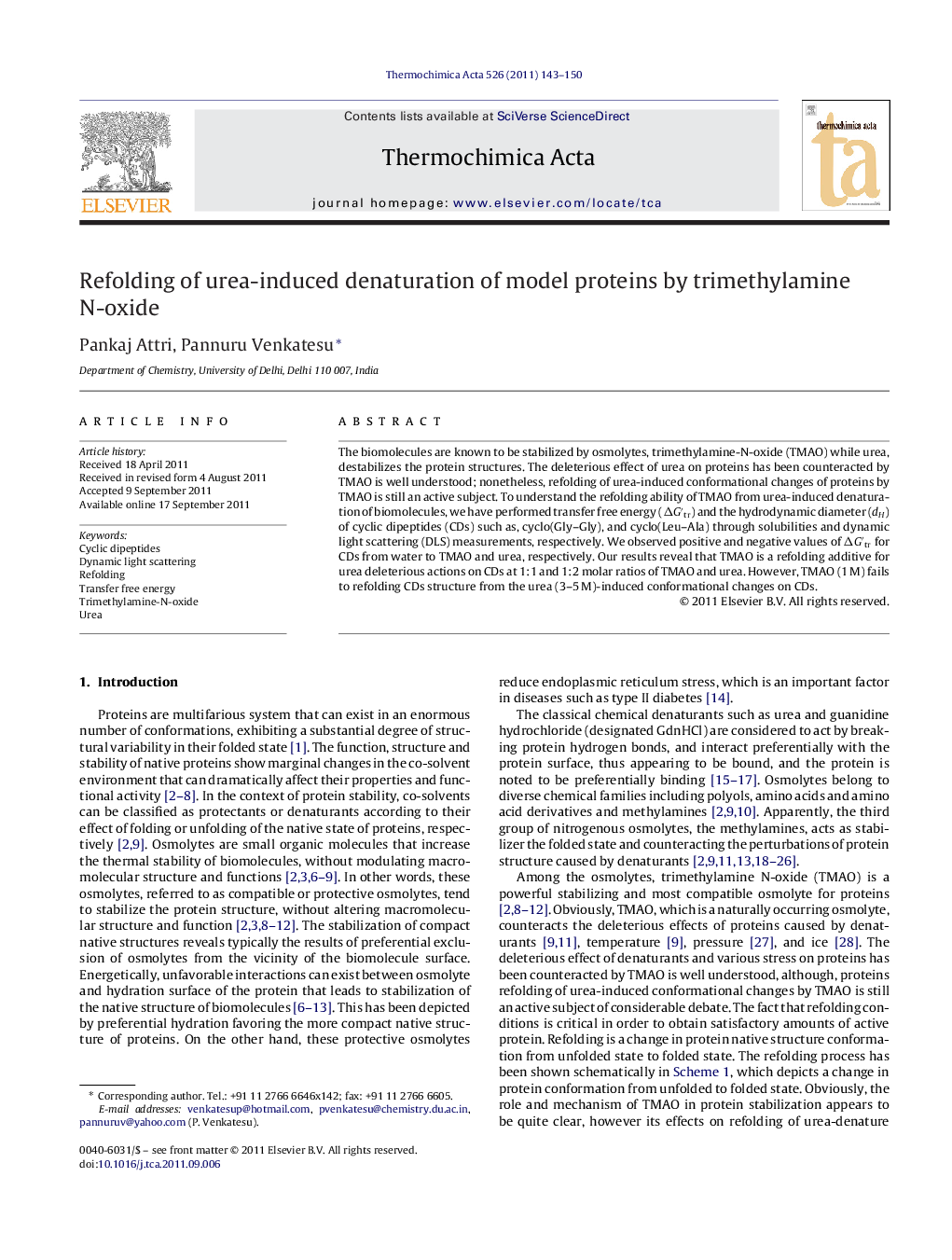| Article ID | Journal | Published Year | Pages | File Type |
|---|---|---|---|---|
| 674368 | Thermochimica Acta | 2011 | 8 Pages |
The biomolecules are known to be stabilized by osmolytes, trimethylamine-N-oxide (TMAO) while urea, destabilizes the protein structures. The deleterious effect of urea on proteins has been counteracted by TMAO is well understood; nonetheless, refolding of urea-induced conformational changes of proteins by TMAO is still an active subject. To understand the refolding ability of TMAO from urea-induced denaturation of biomolecules, we have performed transfer free energy (ΔG′tr) and the hydrodynamic diameter (dH) of cyclic dipeptides (CDs) such as, cyclo(Gly–Gly), and cyclo(Leu–Ala) through solubilities and dynamic light scattering (DLS) measurements, respectively. We observed positive and negative values of ΔG′tr for CDs from water to TMAO and urea, respectively. Our results reveal that TMAO is a refolding additive for urea deleterious actions on CDs at 1:1 and 1:2 molar ratios of TMAO and urea. However, TMAO (1 M) fails to refolding CDs structure from the urea (3–5 M)-induced conformational changes on CDs.
► We have studied the refolding of urea-induced denaturation of CDs by TMAO. ► We have performed ΔG′tr and the hydrodynamic diameter (dH) of CDs. ► We observed positive values of ΔG′tr for CDs from water to TMAO. ► The negative ΔG′tr contributions were obtained for CDs from water to urea. ► Our results show that TMAO stabilize while urea destabilizes the CDs. ► Our results show that TMAO is a refolding additive for CDs.
